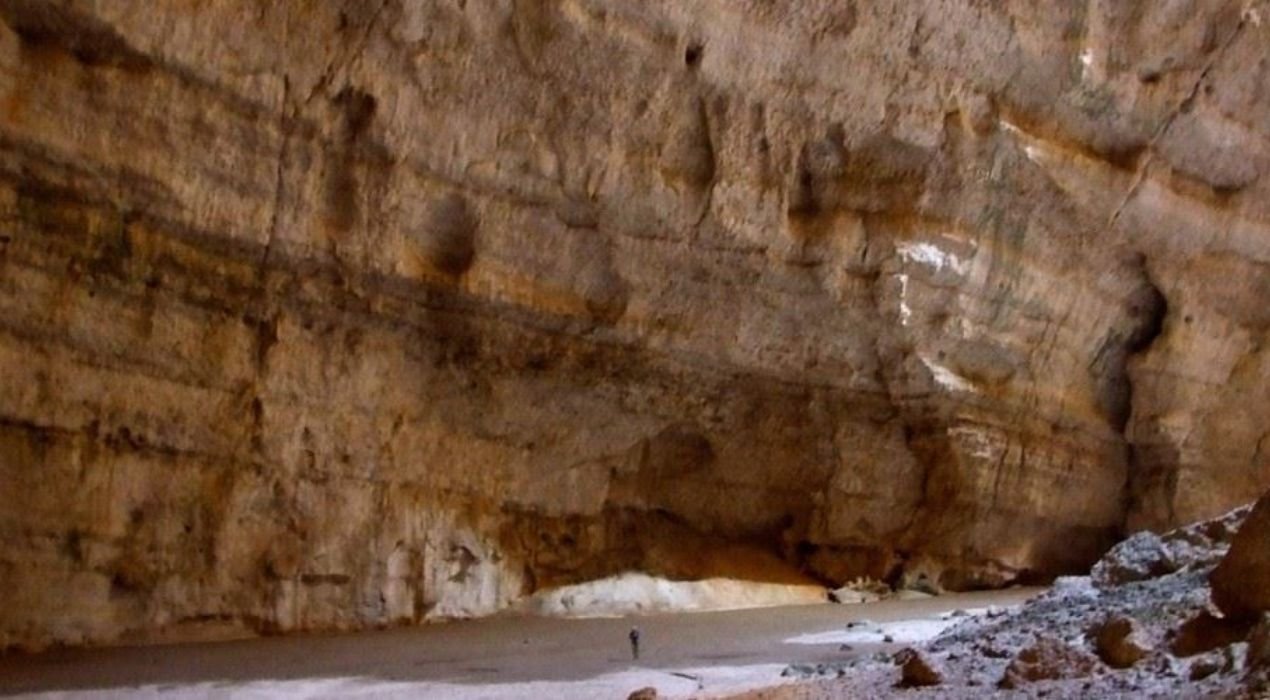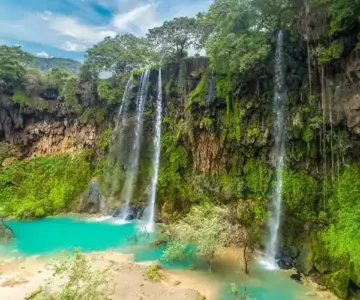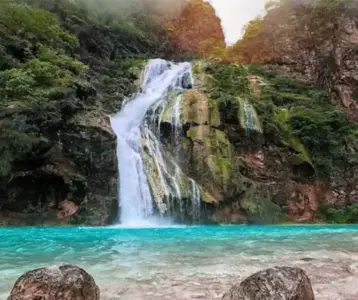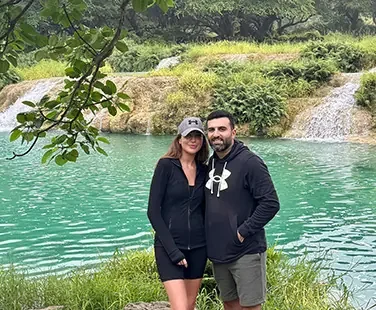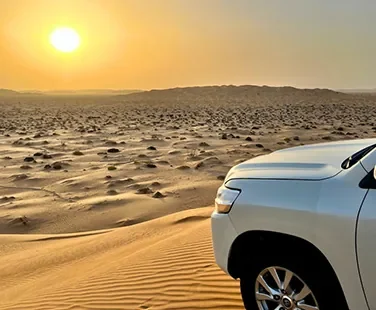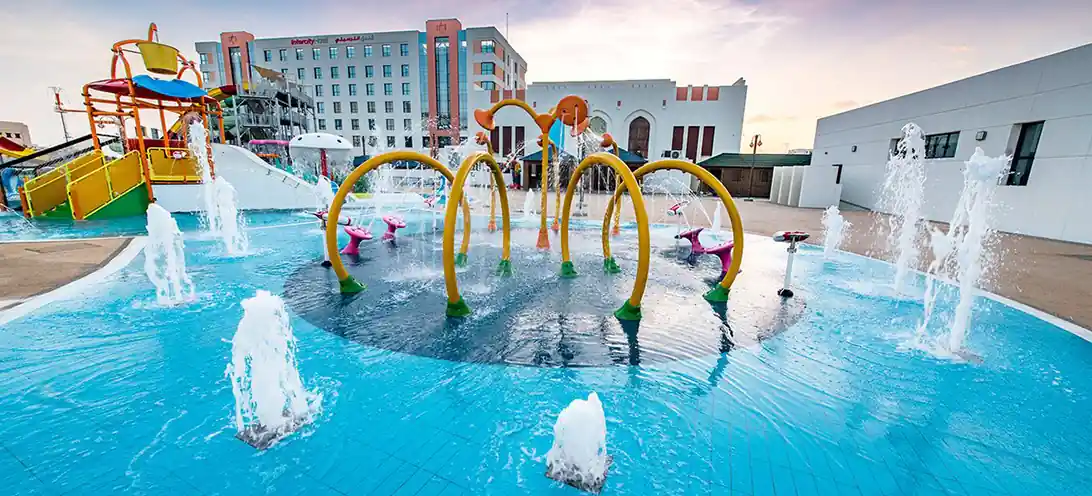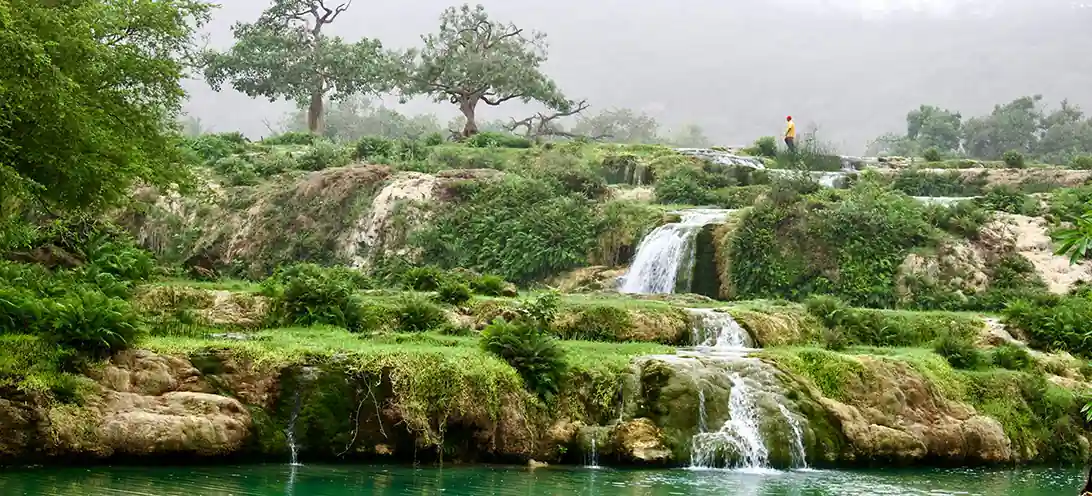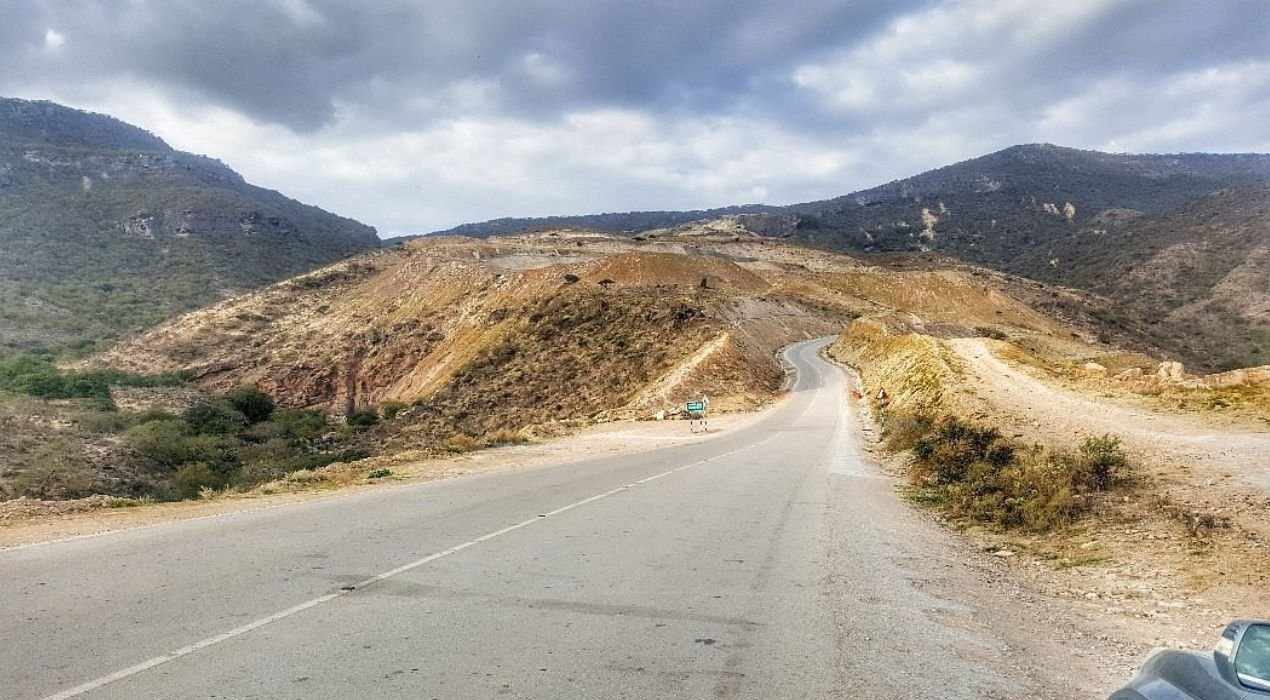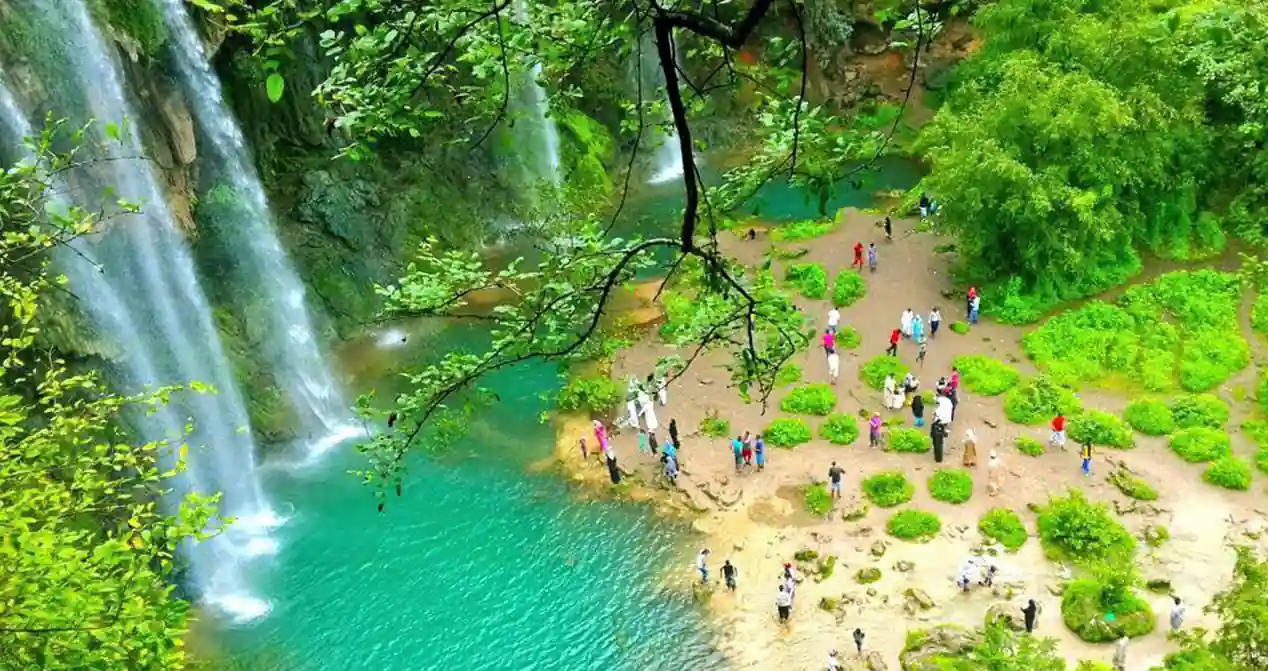Exploring caves in Salalah is a unique and exciting experience that attracts many tourists to Salalah, and if you’d like to know about the most famous cave in Salalah, we’ll clarify that in this article. Cave exploration gives visitors the opportunity to discover a fascinating underground world, where they can explore unique terrains and stunning rock formations inside the caves. Salalah’s caves are known for their beautiful rock formations, reflecting the beauty of nature and the deep geological history of the region. Salalah Safari Tours offer exploratory trips with professional guides to ensure a safe and enjoyable exploration experience inside these enchanting caves.
The Most Famous Caves in Salalah:
There are many caves in Salalah, which are among the most natural attractions that attract tourists and local visitors alike from all over.
The Marneef Cave Salalah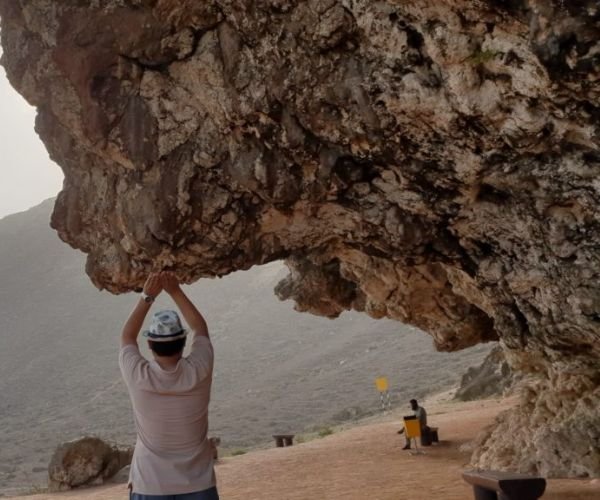
Marneef Cave in the Mughsayl Beach area is one of the most beautiful caves in the Sultanate, and the most famous cave in Salalah, thus attracting large numbers of visitors.
This cave is located about 40 kilometers from Salalah, overlooking the sea, providing an ideal place for trips and relaxation, especially during the autumn season. Marneef Cave is considered a distinctive tourist site due to its stunning views of the sea and the presence of natural fountains that reflect the beauty of the area.
Marneef Cave has been equipped with a washing area, where a visitor reception center has been established and protective fences have been erected on the sea-facing side. Efforts have been made in collaboration with the Ministry of Tourism to enhance the visitor experience and provide an ideal environment for enjoying the beauty of Dhofar’s coasts, its stunning mountains, and the unique natural fountains in Marneef Cave.
You can rely on Salalah Safari Tours and join their wonderful exploratory tours, visit this distinctive Salalah cave, and enjoy its wonderful atmosphere.
Darbat Cave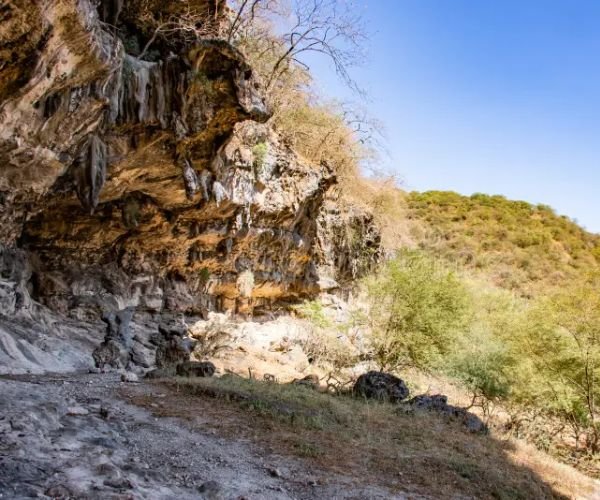
The Caves of Wadi Darbat are considered unique due to their natural arches, inscriptions, and adorned walls, showcasing diverse limestone formations suspended from their ceilings.
Exploring the caves of Wadi Darbat offers a rare opportunity to discover the remarkable geological formations and witness their evolution over thousands of years. This visit also allows glimpses into human activity during ancient times through the inscriptions and drawings reflecting the lives of primitive humans who inhabited these caves.
Ittin Cave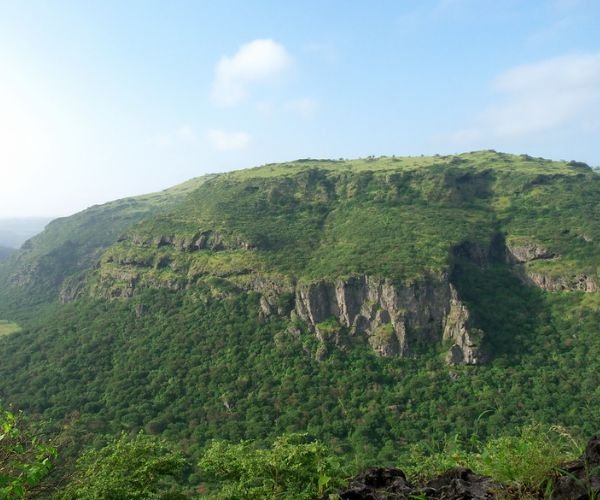
Many caves in the Dhofar Governorate are characterized by their proximity to major water springs, such as Ittin Cave, located near Ain Jarziz. It is one of the largest caves in the Ain Jarziz area.
The cave is internally divided into two parts: the main cave covering an area of approximately 602 square meters and a smaller cave spanning about 189 square meters. The cave is located about ten kilometers from Salalah and can be accessed via the Salalah-Etin main road.
The cave is situated on the right side after the end of Etin Pass, on a mountain plateau rising 400 meters above sea level. It is approximately 400 meters west of Ain Jarziz, offering a distinctive vantage point overlooking all sides of Wadi Jarziz due to its height and prominent location.
Salalah’s remarkable Ittin Cave attracts many tourists and nature lovers throughout the year, providing an ideal location for picnics and enjoying the breathtaking natural scenery. The cave also features geological phenomena such as water basins from which water flows during rainfall.
Razat Cave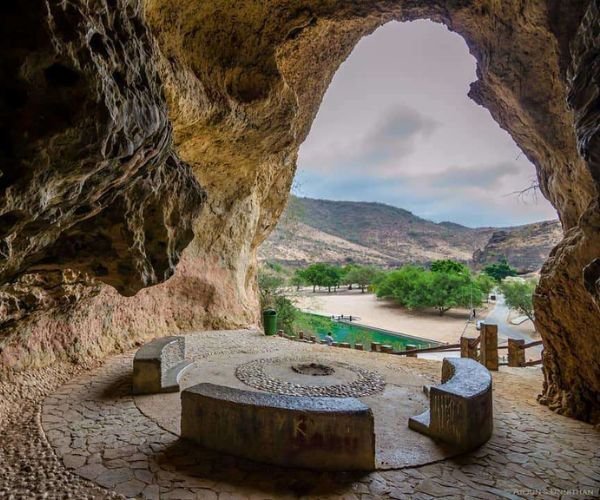
Razat Cave is among the most visited destinations by tourists and residents alike, situated in the mountain overlooking Ain Razat, about 25 kilometers from Salalah. This cave can be easily accessed and visited due to its low elevation from the ground. It features stairs and seating areas that enable visitors to explore the cave and enjoy beautiful views, including overlooking Ain Razat and its garden from the cave entrance.
Rakhyut Cave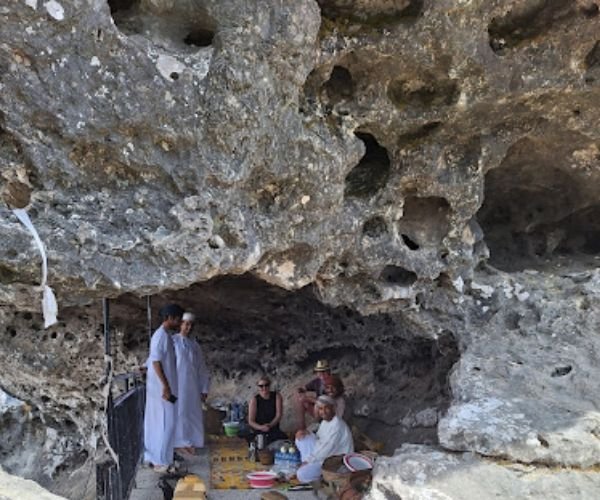
In the Dhofar region, in the wilayats of Rakhyut and Dhalkout, several caves and grottoes are famous. Rakhyut Wilayat is known for caves like Sharoot, Akhart, and Hartum, among the most famous caves in the region. In Dhalkout Wilayat, important caves include Shisa, Mashloul, and Asbeir, featuring some archaeological inscriptions dating back to ancient times.
Suhoor Cave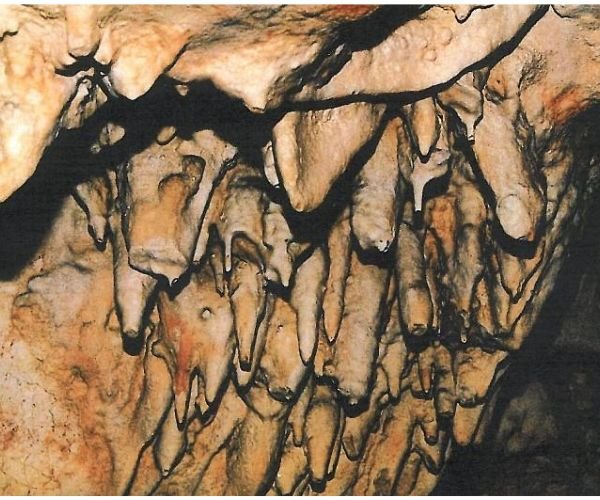
Suhoor Cave is considered one of the most prominent caves in the Dhofar Governorate, and many people consider it to be the distinctive cave of Salalah, as it is distinguished by its wonderful natural formations and attractive location. This cave, made of limestone, is located in Wadi Nahiz, about 12.5 kilometers north of the city of Salalah.
The cave entrance is distinguished by its large size, as it overlooks the valley with its arch decorated with ancient stalactites and large risers, approximately two meters high, giving it a striking and attractive appearance.
The cave contains a narrow corridor located on the northern side of its entrance. This corridor leads to the main room in the cave. This room is decorated with exquisite cave structures such as columns and stalactites of various shapes, which gives it a unique beauty.
Drops of water can also be seen hanging in many of the stalactites, as they were formed by water deposits over time. The room features a dry basin measuring 1.8 meters long and 1.5 meters wide, which bears traces of fossilized waterfall water, appearing as if it had been flowing in the recent past.
Ain Hamran Cave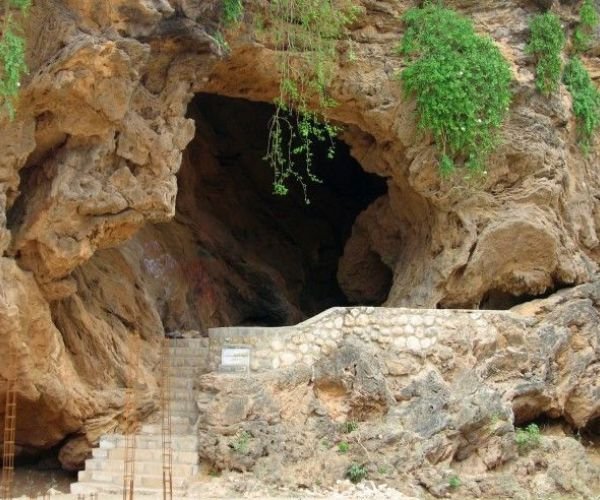
In Ain Hamran, there is a cave known as Al Ain or by its alternative name, the Bat Cave, where large numbers of bats reside. This cave features a broad entrance extending one meter wide, and the pathway inside the cave stretches for about 30 meters until it reaches a chamber with an area of approximately 100 square meters.
Teeq Cave, Salalah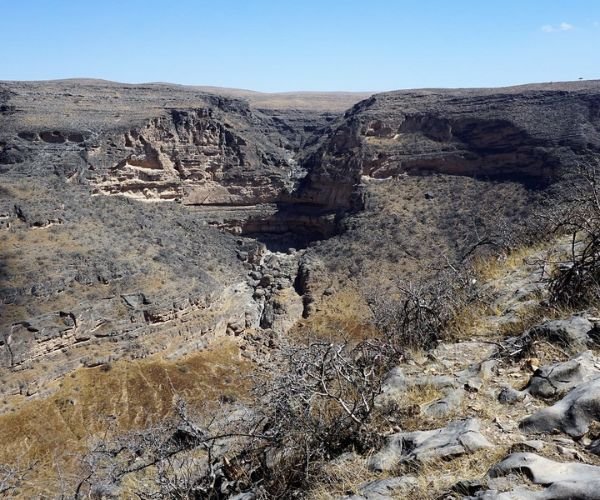
Teeq Cave is located near the top of the Teeq Sinkhole in Ayn Jarziz, characterized by a volume of about 170,000 cubic meters. It is considered the largest cave in Salalah, featuring at least six entrances, with the western entrance being the largest. Visitors can view the cave from the top of the Teeq Sinkhole and access it through small paths visible from the main track, allowing them to enjoy panoramic views of the sinkhole and its waterfalls.
Teeq Cave is located north of the Teeq Sinkhole in Marbat, about 56 kilometers from Al Mughsail Roundabout in Salalah, and about 9 kilometers north of the Teeq Sinkhole. Access to the cave site is possible via the main road to the Tawi Atair Governorate, then north through the road leading to Teeq Atair, passing through Wadi Darbat, and following the signs to the cave for easy access.
Tawi Ateer Sinkhole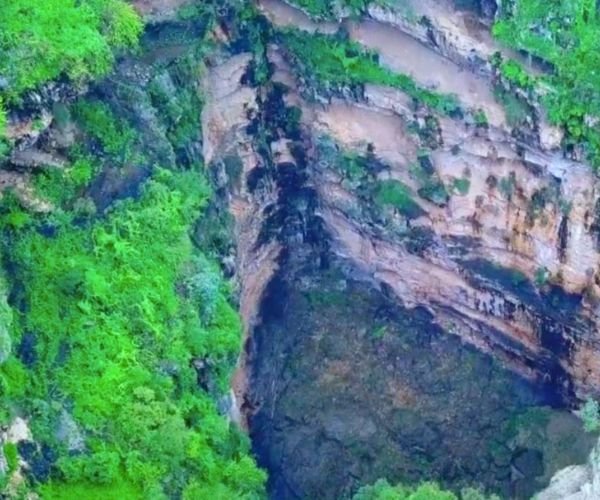
Tawi Ateer Dissolution Sinkhole, also known as the “Bird Well,” gained international fame since its discovery in 1997 by a team of Slovakian explorers in collaboration with Sultan Qaboos University, being one of the largest dissolution sinkholes in the world. This sinkhole adds to Oman’s rich inventory of environmental, geographical, historical, and archaeological landmarks, enhancing tourism patterns that distinguish Dhofar Governorate and provide exciting opportunities for nature enthusiasts and adventurers.
The volume of Tawi Ateer Sinkhole is approximately 975,000 cubic meters, with a diameter ranging between 130 and 150 meters, and a depth reaching 211 meters. This sinkhole can accommodate a building composed of 70 floors, surpassing the height of the largest pyramids in Giza, Egypt, by about 70 meters.
The flow pattern of the aqueous solution through the flowing valleys towards the sinkhole played a key role in rock dissolution and the formation of this magnificent sinkhole and stunning waterfalls along its intersection with Teeq Cave.
The importance of caves in revitalizing tourism in Salalah:
Omani caves are characterized by their touristic significance, attracting adventure enthusiasts and enthusiasts of non-traditional sports activities. They reflect a unique aesthetic value that remains pristine and untouched by modern intervention, with some caves in the Sultanate dating back more than 25,000 years, offering vast opportunities for geological study in one of the world’s best regions.
The importance of these caves also extends economically, as Omani authorities seek to harness the water resources within them, especially since they maintain low temperatures, making them ideal for tourism via rubber boats to explore their geological formations. Scientifically, their geological formations, rock masses, peculiar openings, depth, and darkness highlight their significance, requiring special techniques for sightseeing and uncovering their secrets through the efforts of researchers and scientists.
Development projects for these caves contribute to boosting eco-tourism, enhancing interest in pristine natural sites rich in wildlife, birds, and moderate climates. These caves are natural jewels formed over thousands of years, integral parts of Oman’s natural, environmental, and touristic heritage that must be carefully preserved and nurtured as they represent an important aspect of national heritage.
General Questions:
What is the best time to visit the caves of Salalah?
Salalah’s climate is characterized by the Khareef season, which usually begins in late June and extends until early September, known locally as autumn. During this time, the area experiences heavy rainfall accompanied by dense fog, giving the city a lush green appearance, with temperatures ranging between 20-25 degrees Celsius.
In the rest of the year, Salalah has a hot and dry climate, with average temperatures around 30 degrees Celsius during midday and dropping to about 20 degrees Celsius at night. This season is known as the dry season.
Generally, Salalah’s climate is warm and humid, with an average annual temperature of around 27 degrees Celsius. The Khareef season is a unique experience for visitors, offering the opportunity to enjoy the lush green landscapes of the city and moderate temperatures with rainfall. Therefore, if you want to visit the enchanting Salalah Cave, the best time is during the Khareef season.
How do you get around tourist attractions in Salalah?
You can get around Salalah by using taxis and local buses, and car rental services are also available in the city if you prefer to drive yourself. Renting a car allows you to travel between tourist areas and visit remote places. Due to the mountainous roads, it’s a good idea to consider renting a four-wheel-drive vehicle for comfort and safety during your trips.
By choosing Salalah as a tourist destination, you can explore a unique natural heritage that includes the best caves in the region, including the famous Salalah Cave, known as the Marneef Cave. Marneef Cave is one of the top tourist attractions in the area, known for its natural beauty and rich history. You can benefit from Salalah Safari Tours to explore this cave and other wonderful natural landmarks in Salalah.
Thanks to these tourist trips, you will have the opportunity to discover the depths of the cave and enjoy its unique rock formations inside, accompanied by professional guides who provide interesting information about the natural history of the area. Undoubtedly, this experience will be exciting and enjoyable for anyone who loves nature exploration and adventures.

